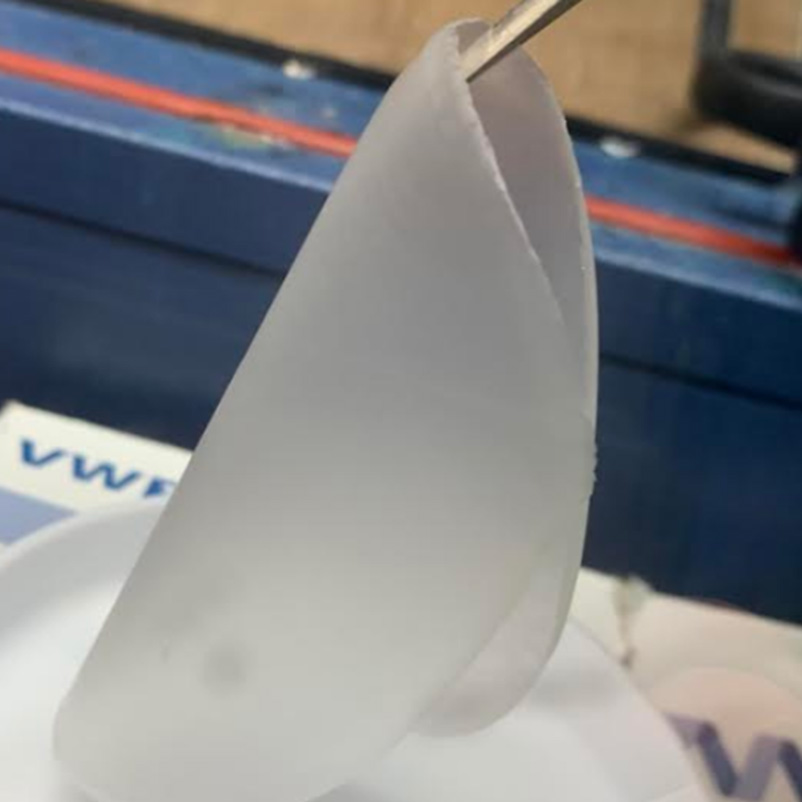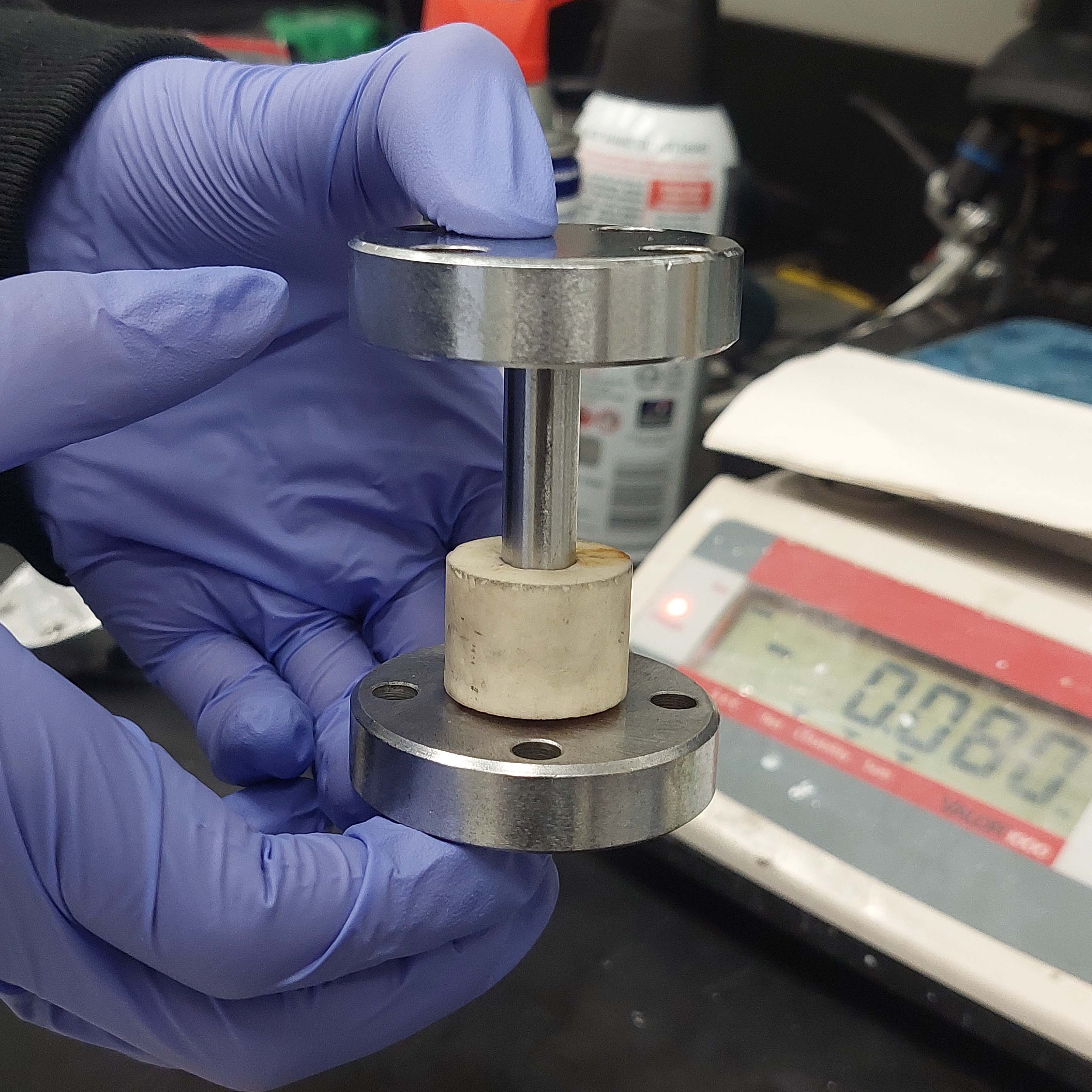News Story
Walker Wins Mixing Forum Student Award

Left: Professor Calabrese. Right: Justin Walker.
After being named as a finalist in the competition, Walker received an all-expenses paid trip to the conference, where he was invited to present his research for the final round of judging. He received first prize, a plaque and $500 for his paper, "Breakup of an Axisymmetric Laminar Jet in the Presence of Non-Ionic Surfactants."
Liquid dispersion in stirred tanks and high shear mixers frequently involve the use of surfactants without a strong physical understanding of how the surfactants affect the mechanics of droplet production and breakup. Recent studies by Calabrese's High Shear Mixing Research Program have shown complex interactions between the shear rates experienced by droplets, the surfactant concentration and diffusivity, and the viscosities of the phases. In order to better understand the physical processes going on in the geometrically and hydrodynamically complex mixer systems, Walker and Calabrese developed a new experiment, consisting of an axisymmetric jet issuing into a second, immiscible liquid phase. This allowed for precise control of droplet production and breakup.
They then performed an extensive series of experiments with water-air and oil-water jet systems. They observed three distinct flow regimes over the range of conditions studied, depending on jet velocity and surfactant concentration. The presence of surfactants and the time scales involved meant that the conventional theories for prediction of jet phase transitions, as well as jet length and droplet size predictions, must be redefined to account for surface elasticity and interfacial tension that varied with time.
The results of this study, Walker explains, are useful not only to the mixing community but to a broader community of scientists and engineers because it helps answer some important questions about the interaction of immiscible liquid interfaces in the presence of surface active materials. Nearly all commercial and industrial applications of liquid dispersions involve some form of surface active materials, whether biological, chemical, or physical. Achieving a better understanding of these systems could have applications in a wide range of products and services, including inkjet printing, fuel injectors, food preparation, and pharmaceuticals.
"…design[ing] and build[ing] an entirely new experiment from the ground up and using it to investigate a problem that many researchers consider prohibitively difficult to study is extremely rewarding," Walker says of his research.
"I was extremely honored to be selected as a finalist and to attend the conference," he adds. "I'm from western Canada myself, so any chance I have to get back to that part of the country is exciting. I also extremely enjoyed attending a small, intimate conference....It was a great opportunity to get to know many of the important people in my field…[including] some of the authors of many of the books and papers I have read over the last few years."
Calabrese's research group has a history of strong performances at the NAMF conference. Including Walker, out of the six times NAMF has held the Student Award competition, the Calabrese Group has produced two finalists and two winners.
NAMF, part of the American Institute of Chemical Engineers (AIChE), promotes scholarship, education and research in the fields of mixing and fluid mechanics. NAMF hosts its biannual Mixing conference to provide the mixing community with a forum in which to discuss the latest developments in academia, government research, product development, and industry.
For More Information:
Visit the NAMF Student Award web page »
Published July 20, 2010









